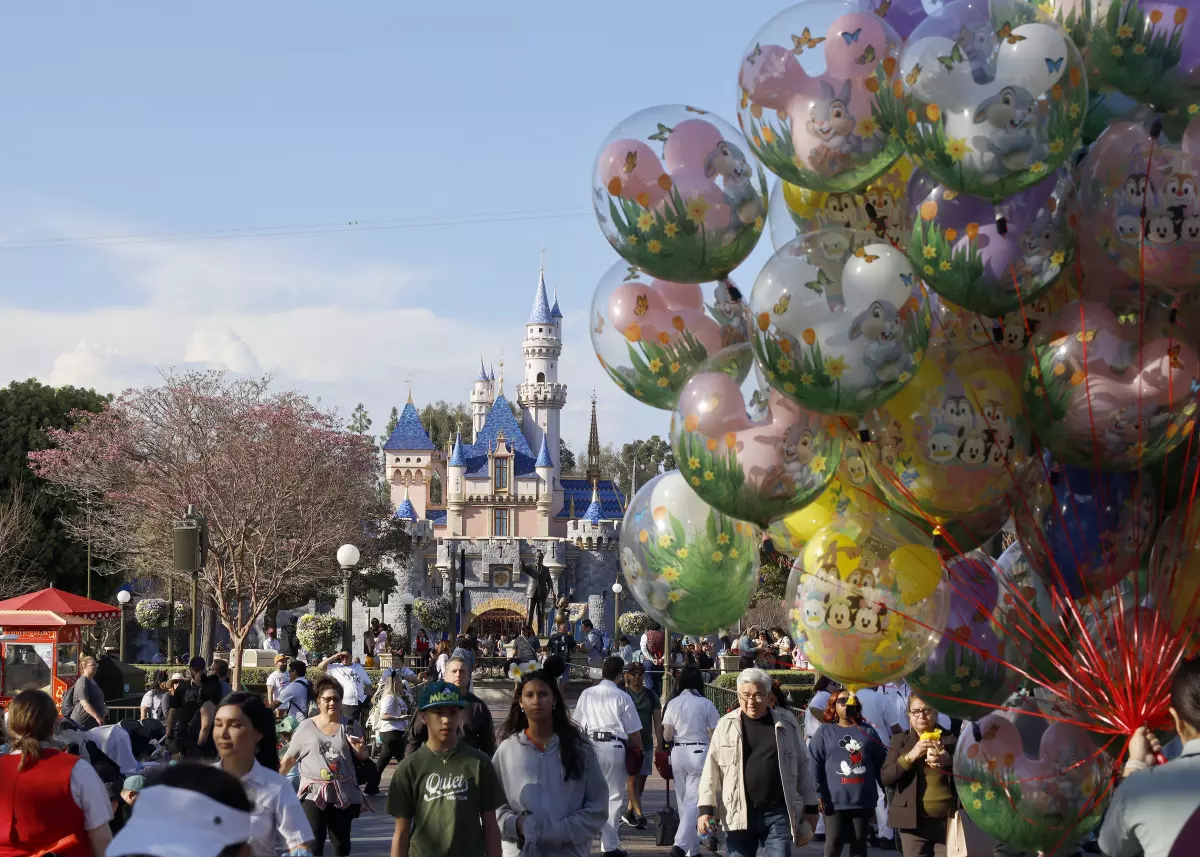
This article is more than
2 year old
Anaheim City Council approves a plan to amend zoning rules to allow Disneyland to build new rides, hotels and stores within its existing footprint.
The Anaheim City Council unanimously approved Disneyland’s multibillion-dollar expansion plan early Wednesday, allowing the theme park to build new attractions, shops and restaurants within its current properties while allocating millions for local projects.
The council voted 7-0 following presentations and public comments from more than 200 people, including residents, Disney employees, city officials, business associations and union groups that ran into the early hours Wednesday.
“Tonight is a decision that has weighed very heavily on [my] mind,” Mayor Ashleigh Aitken said during Tuesday night’s meeting. “As someone that has been quite the vocal critic in the past of some of these projects, I’ve been really surprised in doing my due diligence and reading thousands of pages of documents that this project will bring a benefit to our community, not just in the near future, but decades to come.
“I do believe the success of [Disneyland] provides a really important way for us to build affordable housing, for us to invest in making our parks in every single district better” she added. “It gives us those resources for police and fire and helps us improve infrastructure.”
The motion to approve the project was made by Councilmember Natalie Meeks and seconded by Aitken.
The agreement is a historic moment for the theme park, which has not made major changes since the 1990s, when it added a new park, a downtown shopping and dining district and parking lots.
The council’s vote provides initial approval of the expansion plan, with a second, procedural vote expected May 7. If approved then, the plan would require 30 days for changes to take effect.
Known as DisneylandForward, the plan will give Disney the flexibility to redesign the resort, including Disneyland, California Adventure Park and the Downtown Disney business district into what Disney Global Development Vice President Rachel Alde described as a more “immersive” experience.
The council’s action will lead to a series of amendments to zoning rules so the entertainment giant can add new attractions alongside hotels on the west side of Disneyland Drive and rides and new shopping, dining and entertainment to the southeast on what is currently Toy Story Parking Area at Katella Avenue and Harbor Boulevard. The park will not expand outside its current 100-acre footprint in Anaheim, according to the plan.
Tuesday’s meeting drew hundreds of residents — both supporters and opponents of the project — who stayed late into the night for the opportunity to speak and witness the council’s final decision. For those in favor, the project is seen as jobs creator that will boost the local economy.
Kevin Rafferty, a Disneyland employee and longtime Anaheim resident, said that his parents met while working at Disneyland and that he and his wife met the same way.
“I’m so excited for what the future could look like for the Disneyland Resort in Anaheim,” he said. “Plus [the project] will provide millions of dollars in tax revenue and thousands of new jobs.”
But Disney’s plans, including a proposal to privatize public roads, also raised concerns from some who worried about traffic impact on the community.
“We have to live with traffic jams on a daily basis, with road closures and detours at the will of Disneyland events as a bonus,” said Trangdai Glassey, who lives near the park. “People come to Disneyland to have fun, but the local residents bear the brunt of endless problems: air pollution, daily traffic congestion and noise pollution.”
Some residents also worried the expansion could increase rents and the cost of living in Anaheim.
A few speakers complained there were not enough seats inside council chambers, forcing them to stand outside in the cold until they could address the council about the project.
The proposal includes a new 17,000-space parking garage, as well as three pedestrian bridges over Harbor Boulevard and two bridges over Disneyland Drive. The plan also asks the city to give Disney control over several adjacent public streets, including Magic Way, Hotel Way and parts of Clementine Street.
Disney executives have contended that the streets they are requesting to take over are already used mostly by visitors making their way to the park. It has proposed paying $40 million to Anaheim for the roads — part of a $90-million investment for street improvements near the park, including a plan to widen Katella Avenue.
In all, Disney has pledged to give the city more than $100 million for street improvements and affordable housing as part of the plan. City officials during a January meeting suggested having Disney increase its contributions to the city.
City Councilmember Natalie Rubalcava, during the January meeting, applauded Disney’s commitment of $30 million toward affordable housing but said the company should consider a longer-term investment in housing in the city.
“One of the things I would love to see Disney commit to in perpetuity is some additional funding for housing, whether its a first-time home-buyer program or a last-mile funding for affordable-housing projects,” she said, suggesting Disney could partner with the city to pay for a percentage of affordable-housing projects.
Disney has contended that every billion dollars invested could already generate $253 million in economic output for the city, according to a report cited by the company.
But there was plenty of skepticism in the community. An online petition opposing Disneyland’s effort to take over some streets generated more than 500 signatures. Others were concerned that Disney, which already plays a dominant, outsized role as a power broker in the city, could increase its influence and impact in Anaheim.
Some residents grew skeptical about city plans involving Disney after an internal report found a “potential criminal conspiracy” involving COVID-19 relief funds, former Mayor Harry Sidhu and the former head of the Anaheim Chamber of Commerce.
An FBI affidavit accused Sidhu of being part of a “cabal” of public figures that included a Disney power broker.
But Disney executives defended the plan, saying it could mean thousands of new jobs and millions of dollars in tax revenue for the city.
Hotel transient occupancy tax revenue is Anaheim’s largest source of funding, a city spokesperson said, bringing in $236.3 million for the 12 months ending in June.